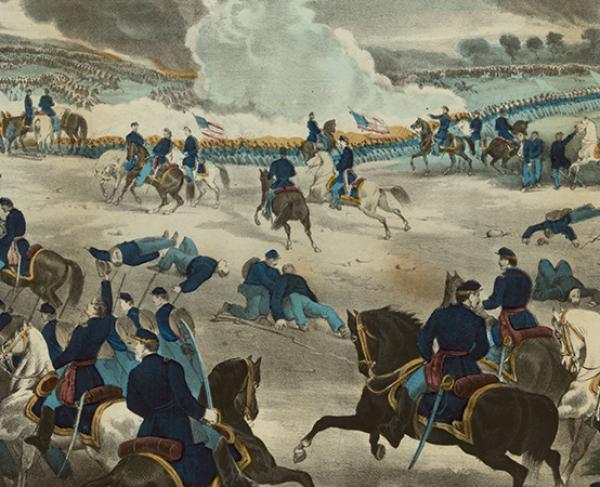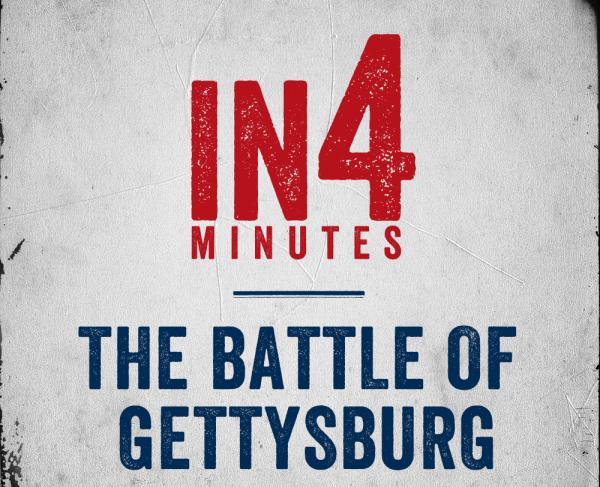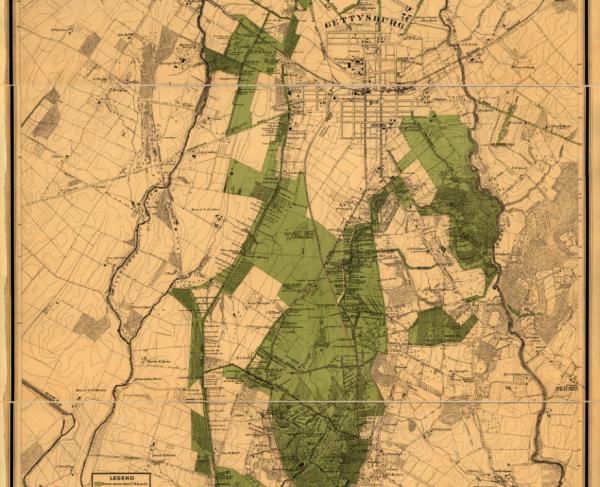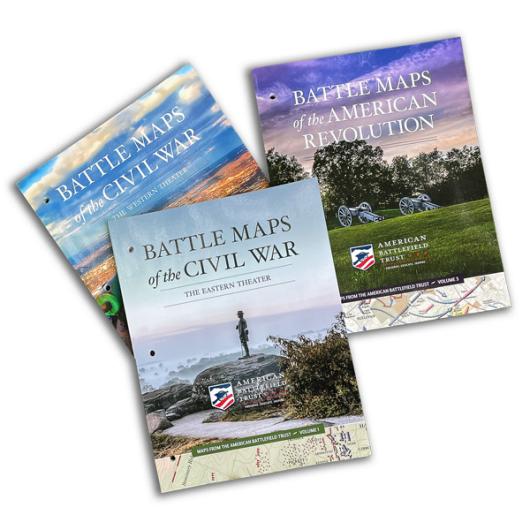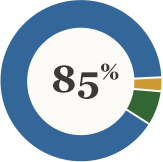A Field Trip to Gettysburg
Veritas Christian Academy
By Dan Pinkham
Thanks to a generous grant from the Civil War Trust, I was able to take my Sophomore US History 1 class from Veritas Christian Academy on our annual visit to the Gettysburg Battlefield. We arrived the evening of November 3rd and spent the next day and a half on the battlefield before returning home. Of the 23 students and 4 chaperones on the trip only two had visited Gettysburg before, so I was excited to share this unique experience with them. After settling in to our hotel rooms late Monday night, we watched the first part of the 1993 film, Gettysburg. For many students, this was their first exposure to the battle, and many students had questions about it. We paused the movie for the night after the Little Round Top scene.
The following morning we headed to the Gettysburg Visitor Center where we saw the film A New Birth of Freedom, the Cyclorama presentation, and the rest of the museum. One of my favorite parts when taking my students to Gettysburg is seeing their reactions as they get off the escalators which ascend into the middle of the Cyclorama. The expressions of amazement and awe at the first sight of the enormous painting are only trumped by the excited questions which follow the presentation.
We then spent nearly 2 hours walking the museum. I challenged the students to not only trace the course of the battle but also to find something in a subject which interested them. The inquiries from students included discussions on battle tactics, soldiers' basic hygiene and standard of living, medical care, care of the animals, battlefield restoration, map reading, weaponry, and camp life. It was exciting to see students realizing how the Civil War and specifically Gettysburg encompassed more than just brutal fighting but impacted every part of people’s lives whether they were soldiers or civilians. Following the museum we adjourned for lunch to the Visitor Center’s cafeteria, the Refreshment Saloon, where many students dined on some “tastes of the period” with the potato and bacon soup being one of the favorites.
Following lunch we boarded the bus along with a licensed battlefield guide who over the next 2 hours took the students back to the hot and humid summer days of July 1-3, 1863 with a focus on the fighting that took place on either end of the Union line. Following a drive through the town of Gettysburg, where the guide pointed out buildings still showing damage from the Civil War, we stopped at a map at the base of Culp’s Hill where the guide set the stage for the battle. From there, we stopped at the Culp’s Hill observation tower, then followed the lines of the first day of battle and then continued on to Seminary Ridge with a stop at the North Carolina monument where our guide explained Pickett’s Charge. From there we moved along the ridge by bus to the Confederate right flank, where we followed the path of the Confederate attack under General John B. Hood against the Union left. We again got off the bus at the top of Little Round Top where our guide explained that part of the battlefield. We finish the guided tour at the Pennsylvania monument and the High Water Mark looking at Pickett’s Charge from the Union perspective.
After dropping the tour guide off at the Visitor Center, we went back out to the battlefield where we started in the Peach Orchard, giving the students a good look at the lay of the land and the folly of General Sickles’ attack. From there, we went to the students' favorite, Devil’s Den, where students explored the rocks and discovered the sharpshooter’s nest. To end the day of touring, we headed back up Little Round Top where the students had time to explore before we watched a radiant sunset behind the statue of General Warren. That evening in the hotel, we finished the second part of the Gettysburg film, foreshadowing the next day’s planned battlefield tour.
The next morning back out on the battlefield, we started with a drive along McPherson’s Ridge to the Eternal Light Peace Memorial where we observed and discussed the terrain of the first day of battle. We then drove to the observation tower on the right flank of the Confederate line where we observed the locations we had visited the day before and saw the field where Pickett’s Charge took place. From there, we walked to the Virginia monument where we paused for a class picture before take the long and sobering walk across the hallowed ground of Pickett’s Charge. For me as their teacher and for many of my students, this was the highlight of the trip as we walked the ground, pausing at intervals as I explained the terrible ordeals facing the men who were making this march. It was here that the brutality and futility of this type of warfare hit home to many students. As we reached the High Water Mark and looked back across the field we had walked, the students were in a subdued mood as they stood and thought about what that field must have been like that July day in 1863. To bring the trip to a powerful and lasting conclusion, our final stop was the Gettysburg National Cemetery. Here, we silently walked the path through the cemetery, ending with reading Lincoln’s Gettysburg Address as we looked out over the cemetery and battlefield.
Even now, over a week after returning from the trip, students are still expressing excitement over the trip as well as asking questions about what they saw and learned. It was exciting to hear a number of them express how seeing the battlefield and walking where soldiers fought brought history alive to them. It was a privilege to take my students on this trip and an invaluable way to help bring alive the importance and lasting impact of our country’s history.
Download the History Field Trip Grant Program Reimbursement form in PDF or .docx format below.
